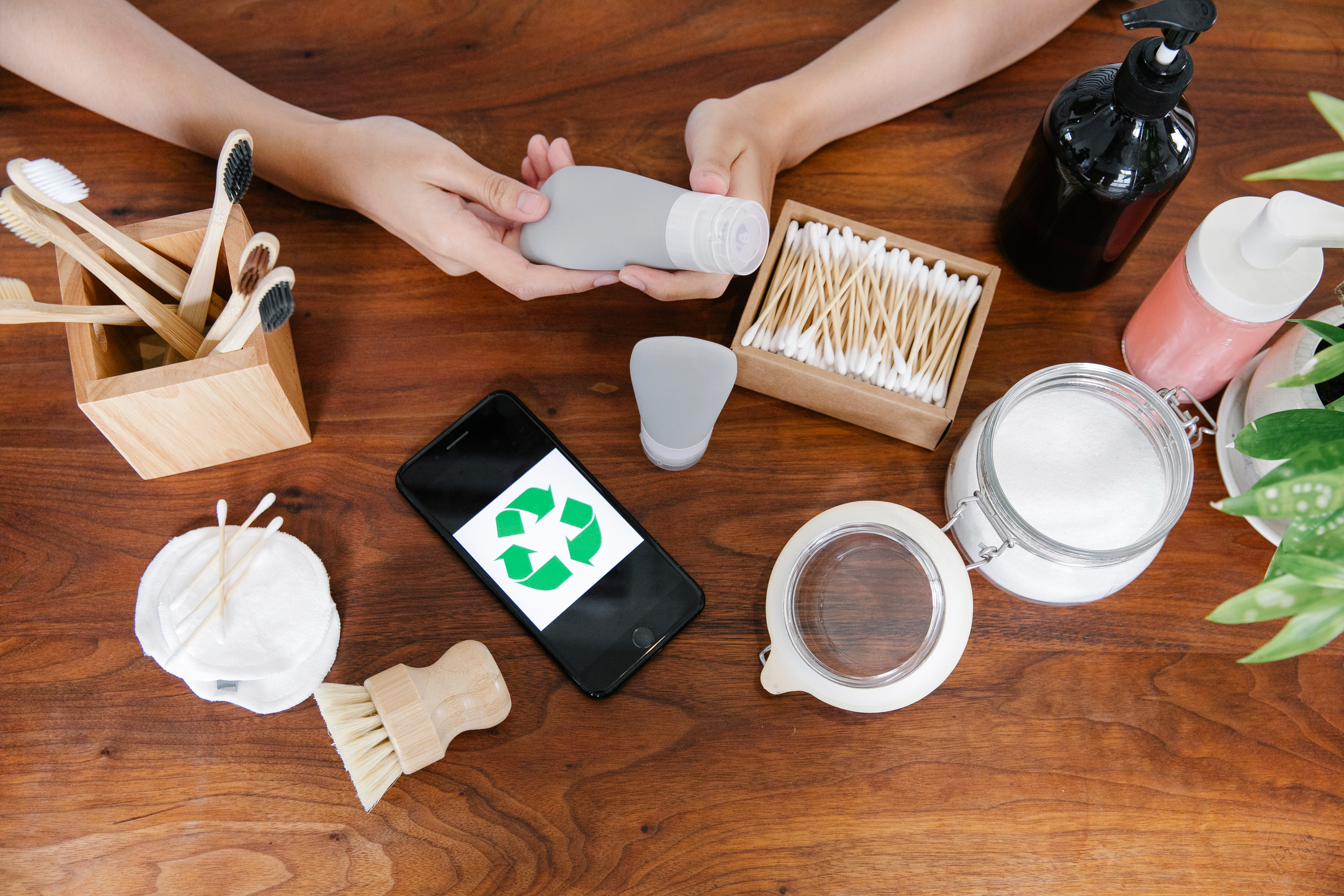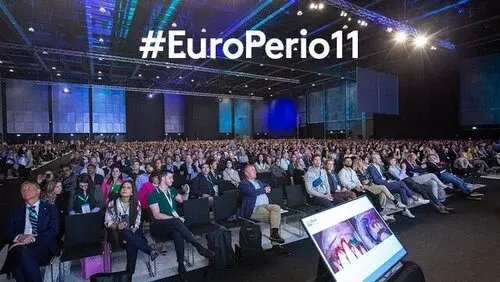
Skip to the full video interview
We recently had the privilege of sitting down with Alpha-Bio Tec founder, Dr. Ophir Fromovich to talk about his incredible journey – from his childhood dreams, to his days as a dental student abroad, and to those who inspired him most in life. He speaks candidly about his vision, and his infinite desire to create all things new, alongside his uniquely innovative implant procedures, bringing his many dreams to fruition. Fromovich cites the importance of serving his patients, and enhancing the patient experience, and how the last three decades have not quenched his desire to learn, to teach, and to grow.
We are especially proud to share it with you and we hope you'll enjoy it. Skip to the full video interview.
“The Link” Editorial Team
As a child, who or what most influenced your curiosity and your zest for life?
I think the most important person in one's life, is their mother, and what a mother gives you. I was born in Israel and lived in Pardes Katz. It wasn't the best place to grow up. The environment was poor when it came to education and communication. But my mother always told me, "You are the best and you can do anything you want. Trust in God and God will help you." Her words empowered me. If your mother tells you that you can do it, then you can do it. Her encouragement really helped me a lot.
When a mother gives her child strength, saying, "Don't be afraid, you can do this. Don't fear anything, only fear God. You're a good person and I trust you," this is how every mother should encourage their child – always. It's so important.
How did you become a dentist?
Like everyone in Israel, I finished high school and went into the army. During my service, I had a lot of problems with my teeth. It was there, spending so much time in the dental clinic that I first fell in love with dentistry. It was the combination of painting, sculpting and medicine. This is what I saw – and this was the beginning of my dream, to become a dentist.
When I completed my army service, I applied to an Israeli university, but my grades weren't good enough. I then applied for a special prep year, called "Mechina." It was for high school students who wanted to improve their grades to enter university. But I didn't qualify, as the program was for low-income families only, and my parents had some level of income at the time. I was very disappointed, as I wanted to study dentistry in Israel. I thought of studying architecture instead because I liked to draw and paint, but I wasn't accepted there either. Maybe my drawing skills weren't good enough or my grades weren't high enough. I didn't know what to do, so I decided to go into business.

But back in 1983, global markets were collapsing. That’s when I said, "I have to follow my dreams." I want to play the piano and the guitar. I want to be a student. The prospect of running a business is good, but it's missing something.
So, I went to Romania. While I was there, I studied. I still had my dream of painting and doing other things. When I was a child, my idol was Leonardo da Vinci. I had many books about da Vinci. I also had a special book that showed how to work with your hands – how to build things, besides just painting and sculpting. At the time, I learned how to repair motorcycles, car motors, build a surfboard and an electric motor, and lot of other tricks. I was working non-stop, but I never gave up on my imagination, and I knew I wanted to create something. After I stopped working and finally became a dental student, I was fascinated with biology and the human body. Back then, it was a dream to study these topics – to understand just how small we are. How very, very, very small we are.
When and how did you start to practice implantology? What was your first experience with implants?
When I finished dentistry, I returned to Israel to take a course in implantology, and learned how to place an implant. It was a two-day course in Tel Aviv where they taught theory and showed some videos. But that was it. No hands-on training. How were we expected to learn anything practical, not just theoretical?
At the end of course, the instructor said, "You'll get a 15% discount if you buy the equipment." I approached him and said, "Ok, bring me the equipment. I want a motor and an implant," to which he replied, "You're the first person who wants to buy this. Are you sure?" I said, "Yes! I just spent two days here studying. Of course, I need the equipment." He was quick to ask, "But do you know how to use it?" "No," I replied, "But I'll learn on my own."

The equipment spent three months in my cupboard. Whenever a patient came in, I'd say, "Look, you're missing a molar or some other tooth. A prosthesis isn't a good option, but we can place an implant, and get the job done." The patient was afraid, and I was afraid, so we made a good team. He escaped and I sighed with relief. Good thing he didn't want an implant. It continued this way for another three months until a very educated woman from Tel Aviv University arrived at the clinic. "Look," I said, "You have a canine that does not look very good and you don't have a nerve. I will place an implant," to which she replied, "Yes, only implants!" Needless to say, I didn't sleep all night. We didn't have CTs at the time , so for the first implant that was very close to the mandibular nerve, I drilled 1mm, x-ray, 1mm, x-ray, 1mm, x-ray.
Up until the 40th implant I placed in a patient, I remember counting, and saying to myself, "Oh good, I did 5, 10, 15, after the 40th, I stopped. So, today, for sure, I've done more than 100,000 implants.
What brought you to developing implants, in addition to placing them?
At that time, implantology was just getting started. Back in 1982 or 1983, it was just taking off. In my second year of dentistry, while reviewing the catalog of Brånemark and Zimmer’s Core Vent implant catalog, I thought it could be improved. From a mechanical point of view, there could potentially be a better option.
The concept was that you place an implant and wait 3-6 months. When I looked at the thread of the actual implant, alongside the metal screw, there was a very small thread with a small distance between the threads. This was good, because in metal to metal, you don't need to make a large screw – it's strong enough. But if you look at wood, and you look at screws for wood, they're different. They're a bit conical and have larger threads because wood is spongy, absorbent, with an elastic shape, so you must compress it. When I looked at the bone and I started to place an implant, I knew that the bone is like wood, where the outside is strong, or like a watermelon – outside, it's strong, and inside, it's very fresh.

My concept was that it's not true, it's not possible that this screw can fix the bone. It should be different. It should be similar to a wooden screw. But no one had the courage to even think about it this way. This was because Brånemark had the thread designed at 0.6 pitch or at 0.3 pitch and 60o. This was like a metal screw. When I went back to Brånemark's history, I discovered how he looked at things. He made a chamber inside a rabbit's mouth to study the blood flow. The chamber was made out of titanium but from a standard thread screw because Brånemark was mechanical. This is what he had in mind – the 60 degrees. It became fixed to the bone and held well, because when he tried to move it, it was sturdy. When it came to the osseointegration, Brånemark said, "Wow, it's good, it's great. We're not going to change it!" But this was a big mistake. You take a normal thread, and just because it's good – you stop there? This is where the problems began. There were a lot of implants that failed, and the success rate wasn't high. In soft bone, it was a disaster. In soft bone, if you just put in a screw, where the trabecular of the bone is larger than the thread, it's impossible to get fixation. Back then, they said, "Wait 6 months, wait 3 months." When I looked at this, I quickly realized, "No, I have to change the design of the thread!"
That's when the idea first came to me and I got the courage to move forward with the SPI (Spiral) implant. It was far out of range – a crazy large-threaded implant. But it worked for me!
When I first produced and started to place this implant, it was perfect because it obtained good fixation in the bone. The protocol was relatively more free because you work according to the type of bone in which you place the implant. It was actually quite amazing.
Can you recall the moment you realized you came up with a breakthrough?
Oh yes, I remember it well. It was at a conference in Tel Aviv where dentists from France came to speak to Israeli dentists about implants. I attended one of the sessions holding a small plastic box where I had a few prototypes of implants and abutments I was using.
I remember I was sitting at a table with my friends and a few others who had studied with me. I showed them what was inside the box. "I'm working and developing some ideas," I said. "I'm doing this and that," and they all started to laugh. "Come on, Ophir" they said, "Why are you wasting your time with this?" They kept on laughing.
I remember attending a presentation by one of the dentists from France and I showed him my prototypes. He looked at them and he called over a dentist from Tel Aviv University to take a look. "Come and see this. This guy has a good idea." That's when I first heard the words, "good idea" and that's what prompted me to contact other dentists at Tel Aviv University.
How did you gain the knowledge that helped you found Alpha-Bio Tec?
When I first got started, I began with surface treatments. I would go to Haifa University and sit in the library for hours, talking to people about how to perform surface treatments. I would go to industrial STMs for information, read a lot of books and speak to other professionals to collect as much as information as I could. I wanted to learn about good manufacturing practices, because I had no knowledge of the industrial world.
At the time, the implant field was growing, and a lot of research was being done. I attended all the conferences and lectures I could find in Israel and abroad. I was a good student and I wanted to learn. I would ask a lot of questions, collect a lot of information, and luckily, I have a good memory and a good visual memory. It helped me retain so much information and apply it to the product I wanted to develop. Looking back, I never had the vision of building a large company. I thought, "Okay, let's create a small company in Israel and try to make my ideas work."

When I was first at Alpha-Bio Tec, it was just me and a few other employees. I really didn't know how to build a company. I didn't even know what HR was. People would say, "HR" and I had no idea what they were talking about.
Today, I can see that the results of my efforts were good. I followed the industrial standard – where the surface has to be clean and the materials must be the same. I wanted to learn more about the US standard, ASTM. I asked everyone I knew and collected as much information as possible. I think the product was good because today, 30 years later, it's still functioning – it's still good.
The concept of the SPI (Spiral) implant, the idea of changing the metal screw that Brånemark used to the type of screw of the SPI (Spiral) with a large thread, enabled immediate loading and good fixation. “It will impact the entire world," I said, and it did. It influenced thousands of companies around the world, and today, we see how it's influenced the design of the products for most of the implant companies.
What have you learned about success?
What I know, is that you have to do your very best. I never thought about the money, not ever. I wasn't interested if the company would make money or not. For me, it was more important that the company deliver the best possible product and the best customer service. This is what's important. The money will come. Today, this is my focus and it's exactly what I say to dentists when I teach around the world. "You can make a beautiful clinic, you can have a lot of awards, but this is nothing. It won't make you successful. If you want to be successful, you must think about every patient that comes through the door, as your mother or father, and treat them this way. When you treat your patients like your family, they will feel it. You don't need to worry about anything else. You will be successful. You can choose the best materials, the best techniques, but you need to look for the real value." This is the message I try to convey.
Who do you want your story to inspire the most?
I think my story is meant to inspire young children. They're the ones who have the vision and the dreams and they have to understand that it's possible to achieve them. But it's only if they really want to, if they have the power inside of them and if they don't care what people say or don't say. If, in their hearts, they're convinced it's what they want, then, yes – go for it, do it.
After all these years – has your mission shifted?
This is my mission. My mission was not just to make money or to build a successful company. My mission was and still is, to treat people all over the world. "You have to treat your patients like your mother and father." This is my mantra and I say it all the time. In the morning, when I pray, and I do pray, I say, "God, please give me a mission, let my mission be to treat my patients in the best way I can." This is how I start my day, every day. "Help me to make my life's work in treating my patients." This is the prayer of the great rabbi, physician and philosopher, Rambam.

If I pray to treat patients, given the power to treat them and not look at a patient to see whether they are rich or poor, but rather, treat them as a human being created by God, and see only them, then I am doing good work. Rambam also said, "If they have a physician who knows better than me, please help them to teach me." This part of the prayer has always inspired me. If I recite this prayer, then other physicians that have the knowledge will share it with me and in turn, I will share my knowledge with everyone. This is the reason behind the work I do in my clinic. Everyone, professional or not, is invited to come and learn and it's free. This is my prayer for myself and my prayer for others as well. If others can learn from this, and learn to do better, it will make our world a better place – and help enhance treatment today, and in the years to come. This way, we all win.






.png)